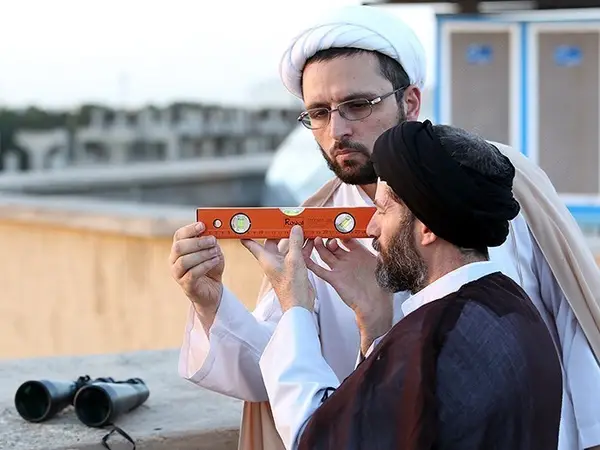Most Islamic countries on Monday celebrated the end of Ramadan but Iranians were told to fast one more day as the Supreme Leader had not sighted the new moon.
The office of Supreme Leader Ali Khamenei and other Iranian grand ayatollahs on Sunday evening said the crescent moon had not been sighted so the first of the month of Shawwal, the tent month in the Islamic lunar calendar, and the Eid would fall on Tuesday.
The Islamic month of Ramadan, therefore, became thirty days in Iran this year and twenty-nine days in other Islamic calendars. In Iran the lunar Islamic calendar is used only for religious purposes while the official calendar is an accurate solar one. Differences in the length of the month of Ramadan in Islamic countries can cause confusion.
On several occasions in the past, as in 2013 and 2020, there has been disagreement among Iran's grand ayatollahs, also called marja (source of emulation) over the sighting of the new moon with followers of each grand ayatollah holding separate Eid prayers.
The difference in marjas’ verdicts reflects their notions for "viewing the new moon". Some marjas require the crescent of the new moon to be seen with naked eye while others including Khamenei allow the use of instruments such as telescopes.
Secular Iranians, and some devout Muslims with more progressive views, often criticize traditional leaders for insisting to see the crescent when science can easily and precisely show the position of the cycle of the moon in the sky.
Khamenei appointed a special body called the "Moon-Sighting Taskforce" after taking office. The taskforce is responsible for stationing "trusted observers" across the country on the final days of Ramadan to report the sighting of the new moon to him. The taskforce receives a budget from the government for its work.
Khamenei's declaration of the viewing of the new moon, and its acceptance by other grand ayatollahs, is politically and religiously significant as it is considered as evidence of his position as the supreme authority among all Iranian marjas.
Iran's devout Shiites are free to choose which marja to follow in religious matters but not to make a public show of their marja's difference of opinion with Khamenei by holding prayer congregations other than those held by the state.
On the day of Eid, Khamenei usually leads the prayers in Tehran and delivers one of his most significant sermons of the year. In recent years the authorities have insisted that Eid prayers be held throughout the country on the day designated by Khamenei.
Two years ago, Khamenei's office announced the sighting of the new moon and a public holiday but two high-ranking marjas – Ayatollah Naser Makarem Shirazi and Ayatollah Hossein Vahid Khorasani – held on for a few hours before changing their minds and following Khamenei's lead.
Iran's Arab neighbors including Saudi Arabia, Kuwait, Qatar, the United Arab Emirates, and Iraq which unlike the others has a majority Shiite population, all celebrated the Eid al-Fitr on Monday. Iraq's Grand Ayatollah Ali Sistani, however, has also declared Tuesday as Eid. The Sunni Taliban in Iran's east said Saturday evening that they had sighted the crescent moon so the Eid fell on Sunday.
According to an undeclared law, authorities expect not only Shiite leaders, but also the religious leaders of the minority Sunnis to follow Khamenei's lead about the declaration of Eid. This year, as in several instances before when the Eid was celebrated on different days in Shiite Iran and Sunni countries, the Sunni imam of Zahedan in south-eastern Iran, Molavi Abdolhamid, held his Eid prayers on Monday in tandem with other Sunni countries.
